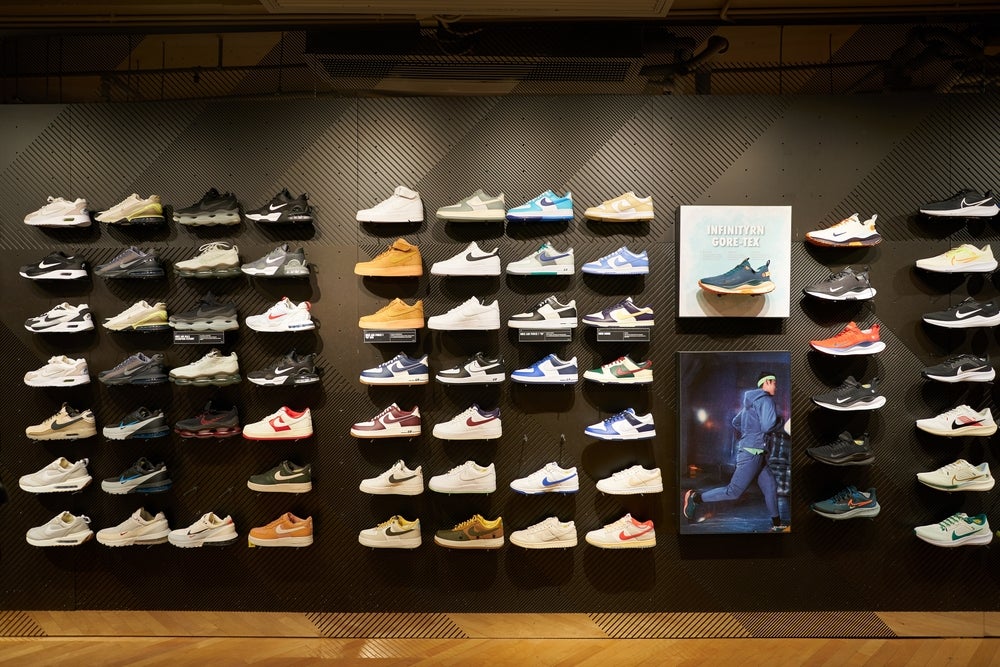So far this year, US sportswear company Under Armour reported a 10% drop in revenue for Q1 (ended 30 June 2024), US sportswear, outerwear and footwear firm Columbia Sportswear posted a loss for Q2 (ended 30 June 2024) and Q2 revenue was flat at Wolverone Worldwide's Sweaty Betty.
It was a similar story at German sportwear company Puma, which saw its net income decline by a quarter in the first half of 2024 (H1) and fellow German sportswear brand Adidas struggled to break ground in North America specifically with a reported 7.7% sales decline in Q2.
Meanwhile, US sports giant Nike posted a cautious outlook at the end of June for the year ahead (FY25) after its sale growth in Q4 was muted due to consumer weakness.
Waning consumer interest or other factors?
Has consumers' love affair with sportswear dissipated or are other factors such as high inflation, ongoing supply chain challenges and material costs having an impact?
GlobalData senior apparel analyst Pippa Stephens tells Just Style the slowdown in the sportswear market over the past few months has largely been due to inflationary challenges.
She says these challenges are also impacting the wider apparel industry — not just sportswear — and are driving consumers to be more selective about what they buy.
GlobalData retail analyst Neil Saunders agrees, adding: "The main reason is a more sluggish consumer economy".
He is quick to add that, despite it affecting all parts of the market, given sportswear's popularity over the past few years, the segment now "has further to fall" than others.
Stephens highlights another differentiator for sportswear is that it "has partially been affected" by consumers previously wanting comfortable items while staying at home during the pandemic "now seeking more elevated fashion as things have returned to normal".
Saunders points out performance is very variable by brand and a lot of younger labels on the market are still posting very strong growth.
"This is putting pressure on some of the more established brands in the market, especially those which, like Under Armour, have lost focus," he says.
He also notes that a lot of generalists have moved into the sportswear and athleisure space. For example, he says Abercrombie & Fitch has its YBP sub-brand, which has been performing well and "all of this extra competition makes the market tougher for the traditional brands".
But Stephens is quick to assert that despite the struggles faced by the likes of Under Armour and Nike, those focusing on athleisure, such as Alo Yoga and Lululemon, are still enjoying strong growth.
Why isn't the 'year of sport' boosting the sportswear market?
2024 has been dubbed the 'year of sport' thanks to the Euros which took place in June and all eyes being on the Paris Olympics in late July and early August, so why hasn't this translated into sales growth?
Saunders explains we have not yet seen the impact of the Olympics as most brands are currently reporting results that go up until the end of June.
That said, while the Olympics will have a slight positive effect, he says this will not override brand issues and general economic malaise.
Stephens shares a slightly more optimistic view adding: "Brands have outlined specific segments that have benefitted, including football boots and jerseys."
She agrees with Saunders about the timings and notes specifically that sportswear giants Nike, Adidas and Puma all released their most recent results before the Olympics came to an end. This means "further improvements are still possible in their next sets of results, especially as economic conditions are also continuing to improve in Europe and the US."
What's next for sportswear and how can sports brands boost sales?
Saunders argues there needs to be more newness and innovation in the market. He says this is particularly important given consumers have moved from buying on impulse and without much consideration to really thinking carefully about purchases.
In other words, he states: "Sports brands need to give consumers reasons to buy, whether that be technical improvements or keeping up with the latest fashion trends."
Plus, he reveals there is a sense that many of the big brands such as Nike and Under Armour "have not been innovating enough, and this has negatively impacted their sales".
In the short-term he predicts the sportwear market will remain under pressure and with slow growth he believes it is more of a zero-sum game than it used to be, which means players will be fighting it out for market share.
In the longer term and as the consumer economy picks up, he suggests growth rates will improve. However, he advises sportswear brands to be aware that the market is more competitive now and they need to remain on the front foot.
He concludes: "Brands should be thinking about how they can differentiate through innovation. Products with a few incremental improvements or changes are often enough to cut the mustard. Brands need to be bolder in giving consumers reasons to buy."









